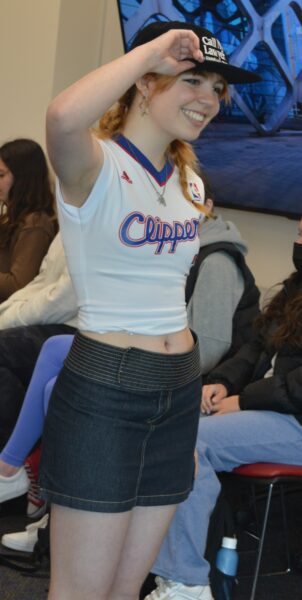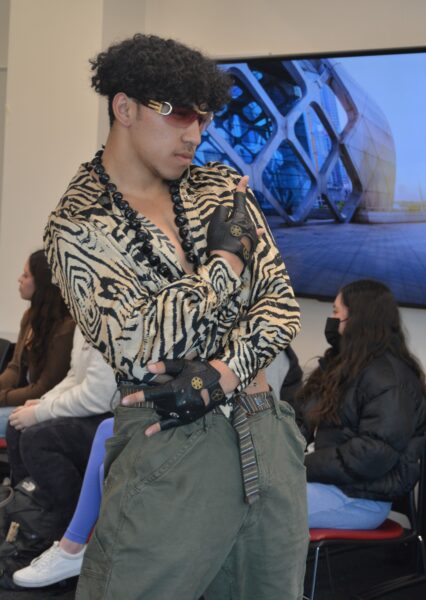
Darra McLintock
The rise in popularity of social media has led to the development of many new fashion trends. Platforms like TikTok and Pinterest have made fashion-based content not only more accessible but also a social phenomenon. While these media platforms can form new communities centered around fashion, they can also develop exclusionary social trends and rhetoric.
“If you aren’t wearing a popular style … people will definitely judge you [at Aragon],” said freshman Ash Caballaro. “[And] in general, with people our age … I know some people definitely feel judged on and off campus [for their style preferences].”
The pressure to conform to a certain fashion style can come from one’s own friends.
“There is social pressure to dress [in a similar fashion as] everyone else,” said sophomore Pippa Reading. “Some people will see the way their friends dress and feel like they need to conform or dress the same way so they don’t get singled out.”
This fear can damage the opportunities for self-expression that fashion offers.
I’ll change into less extravagant or fun clothing before my robotics meetings”
“Teenagers in particular are pretty susceptible to feeling societal pressure to wear what’s trendy and what everyone else likes,” said junior Gaby Wang. “But I think that’s a little ridiculous … People should wear what inspires them.”
These pressures are not often directly stated but rather implicit in day-to-day interactions.
“It really depends [on] what circles you’re in,” said freshman and fashion club member Gemma Albertson. “For me, [social pressure around fashion has] mostly been indirect. That being said, some people are also definitely more up front with shaming someone for their choices.”
Gender stereotypes can also play a role in one’s fashion choices.
“Sometimes I’ll change into less extravagant or fun clothing before my robotics meetings because I feel that femininity is not something that is as embraced or accepted in those environments and spaces,” Wang said.
This type of shame of student fashion can similarly target certain minority groups.
“There’s this stereotype where people will see someone and say ‘oh, she dresses so gay,’” Albertson said. “There [are] definitely minorities who are targeted for how they look [all while] the majority [isn’t].”
Outside of social pressures, another obstacle for young people interested in fashion is the price point. Some of the most popular brands can cost upwards of a hundred dollars for a single item, making casual collections of fashionable items untenable for many students.
“Clothing can be quite expensive, so I think sometimes people feel like they can’t dress how they want to because of how unaffordable it can be,” Reading said. “I definitely think financial status plays a role in the fashion choices people make.”
While fashion can sometimes exclude groups of people, it can also serve as a way of bringing students of similar interests and tastes together.
“Fashion plays a part in the forming of friend groups,” Reading said. “You’ll see kids who dress alternatively hanging out together [for example], and the same thing with a different style … I would say people definitely hang out and make friends because of how they dress because that’s how they can meet each other.
While harmful trends surrounding fashion can surface in any environment, spaces outside of the traditional academic one can be far more accepting.
“People should wear what inspires them”
“There’s definitely a larger population of people who are more unique and extravagant with their fashion choices at middle college,” Wang said. “I think that speaks to the much more accepting environment they have and how the departure from traditional school lets people safely
be nonconforming.”
Breaks from the academic environment altogether can also let students explore their interests in fashion without as much pressure.
“At school, I just wear what [is] comfortable, but outside of school I feel more comfortable being myself with fashion, and I like to dress up on the weekends and dress differently than I would otherwise,” Reading said.
While the rising popularity of fashion and its prevalence on social media makes it a connecting point for many students, the social factors and stigma surrounding it can make it a difficult topic for teenagers who fall outside the conventions.











